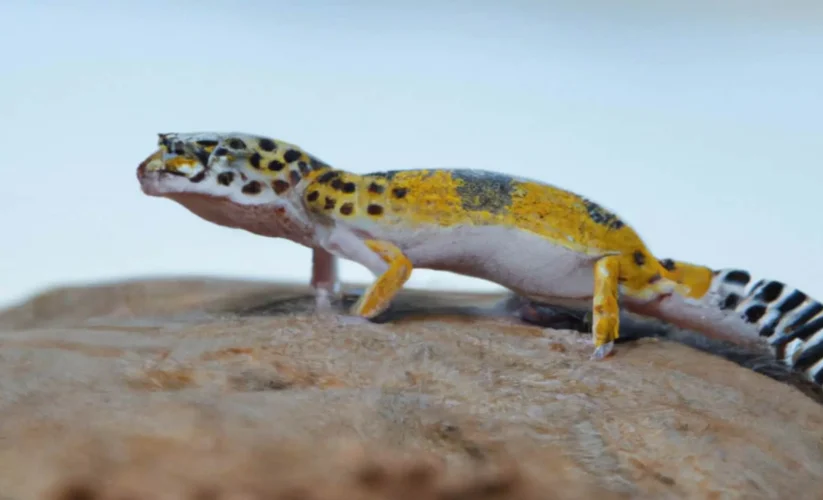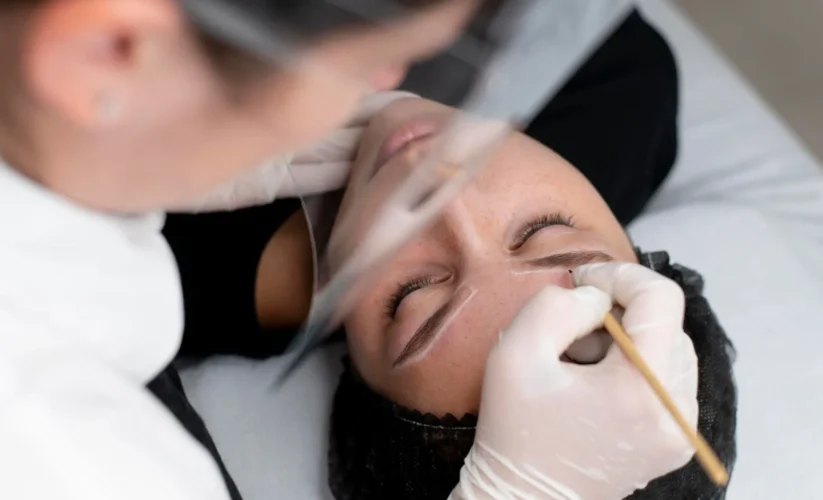
How Long Do Leopard Geckos Live?
So How long do Leopard Geckos Live? With good care, in a place like a house where they’re taken care of, this kind of gecko can live for quite long – between 10 to 20 years is common but there are times when they reach their 30s or even 40s. This lifespan is very different from what it would be living freely in the wild; there, leopard geckos often face predators and struggle with finding enough food which shortens how long they live.
The Challenges of the Wild
The challenges of wild can affect How Long Do Leopard Geckos Live. Leopard geckos have difficulties in their natural habitat. Their usual lifespan is only 6-8 years. This brutal reality derives from the ongoing struggle for survival. Predators such as birds, snakes, and reptiles lurk around every corner.
Their bodies must also deal with parasites, which can deplete energy and impair the immune system.
Does Genetics Play a Role?
Genetics is one of the major factors in determining How Long Do Leopard Geckos Live. While genetics obviously influence a leopard gecko’s lifetime, it is not the only driver. Healthy genes can give a solid foundation for longevity, but proper care is ultimately more important.
A Balanced Diet
A good and balanced diet will give you a positive answer of how long do leopard geckos live because good food is the first step in ensuring your leopard gecko’s long life. A well-balanced nutritional regimen is essential for good health, just as it is for humans. Their major food source should be live insects, like crickets and mealworms, that are adequately sized for your gecko.
Creating a Healthy Habitat
Your leopard gecko’s terrarium is its own personal refuge, and providing the ideal climate is critical for their health and longevity. The size is important; at least 20 gallons is recommended, providing plenty of room for exercise and exploration. Temperature regulation is critical, with a warm basking area reaching roughly 90°F (32°C) and a colder zone at the other end.
The Importance of UVB Lighting
When it comes to How Long Do Leopard Geckos Live, UVB lighting is essential for the health and longevity of your leopard gecko. Just like us, they require UVB rays to generate vitamin D3, which is required for healthy calcium absorption.
Without enough calcium, their bones can weaken and become susceptible to metabolic bone disease. A UVB lamp will help your terrarium replicate natural sunlight. Choose a linear UVB lamp that covers at least half of the cage and consider the bulb’s lifespan, which should be replaced every 6-12 months to maintain effectiveness.
Maintaining a Hygienic Environment
Hygienic Environment can alter the answer of “How Long Do Leopard Geckos Live” in a positive way. Keeping your leopard gecko’s terrarium clean is an important protection against illness and promotes a healthy lifespan. Spot cleaning on a daily basis eliminates waste materials that might contain bacteria and emit unpleasant aromas. Substrate changes are required according to the type; paper towels can be replaced on a regular basis, but reptile carpet may need to be cleaned every few weeks.
When to Call the Vet
When it comes to how long do leopard geckos live, Regular veterinary exams are an investment in your leopard gecko’s long-term health. Preventive care is essential, your veterinarian may do a complete examination, detect any potential health problems early on, and recommend treatment options.
Beyond the Basics
Imagine your life confined to a bare tank; not exactly enriching, right? To keep your leopard gecko mentally active, provide them a dynamic environment. Climbing structures, like branches and rocks, promote natural behaviors like exploring and basking.
To meet their security and thermoregulation needs, provide a range of hides in varying sizes and textures, cork bark rounds, naturalistic caves, and even half coconut shells. Rough pebbles for scratching, smooth surfaces for basking, and even a digging area supplied with safe substrate can all provide enrichment and keep your leopard gecko’s mind and body active, resulting in a long and full existence.
Recognizing Signs of Aging in Leopard Geckos
Physically, their eyesight and hearing may deteriorate, and their previously brilliant colors may fade significantly. Their activities may slow down, and they may spend more time sunbathing or resting in hides. Behaviorally, they may become less interested in exploring their surroundings or capturing prey. All of these are normal indications of aging.
To keep your elderly gecko comfortable, change their care routine. Provide easily digestible feeder insects and consider calcium and vitamin D3 supplementation to promote bone health.
Responsible Pet Ownership
Leopard lizards are fascinating as pets but the ownership involves a lifetime of responsibility. These reptiles are fascinating in that they can live from 10 to 20 years, and some exceptional specimens reach their 30s or 40s. Before choosing a leopard gecko as your pet, make sure you fully examine your very own routines at home.
Finding a New Home for Your Gecko
In some circumstances you may consider rehoming your leopard gecko. It might be due to unintended causes, e.g., allergic problems, relocation to restricted areas for exotic pets, or they might have a change in status that makes them unable to offer proper care to the animal.
Busting Common Myths
When it comes to How Long Do Leopard Geckos Live, certain beliefs can create false expectations.
Myth: Female leopard geckos have shorter lifespans than males.
Fact: According to research, male and female leopard geckos have identical lifespans. With good care, both genders can survive for 10 to 20 years, with some living much longer.
Myth: Leopard geckos can’t live past 10 years in captivity.
Fact: While the normal lifespan in captivity is 10-20 years, rare individuals can reach their 30s or even 40s.
The question How Long Do Leopard Geckos Live has been answered. Experiencing the life of a leopard gecko as its owner is a pleasure filled with many responsibilities. You can assist them into a long and happy life with the social, mental and physical stimulation, and a well-balanced diet.





